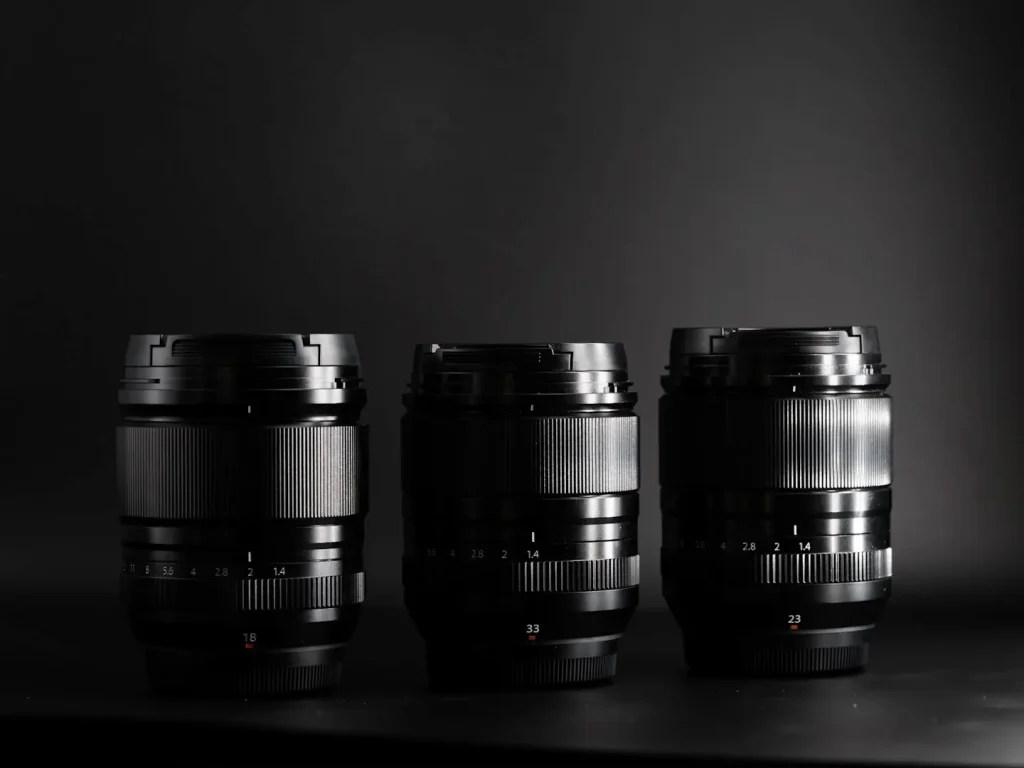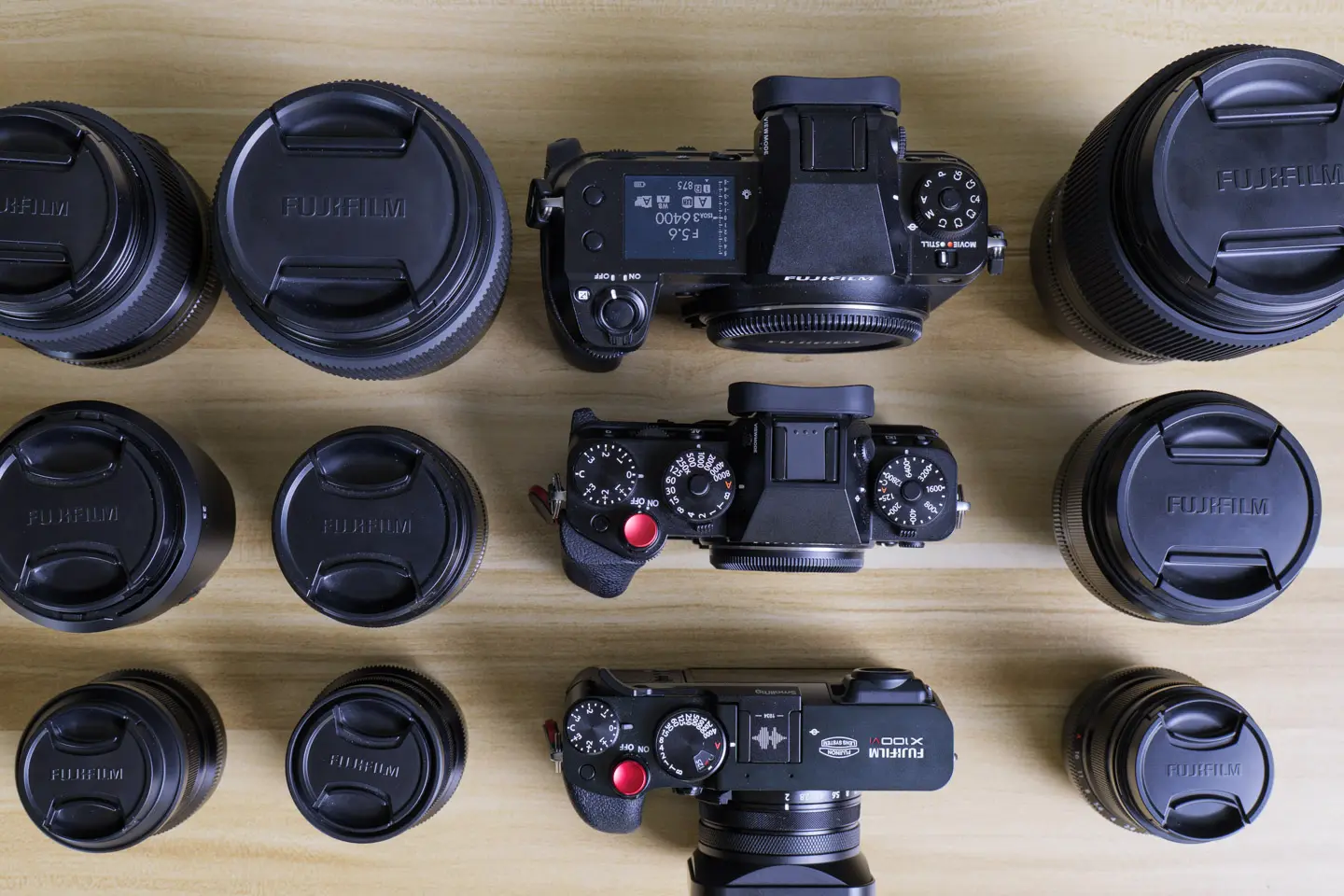If you’re just getting into photography, you’ve probably already found yourself lost in the endless lens choices. Forums are full of arguments over which lens is “sharper” and which are “unusable.” Before long, you feel pressured to keep searching for something better — something sharper, brighter, usually more expensive.
I fell into this trap years ago. I kept adding “just one more lens” until one day I looked at my bag and realised most of them sat unused, gathering dust.
Now, of course, it’s in the industry’s (and many reviewers’) favour to encourage this mindset — after all, sales depend on it. But the truth is, you probably don’t need to cover every focal length or scenario. And in fact, I see so many people end up overwhelmed by all that gear that they simply leave it at home and take their phone instead.
I don’t think that’s just about the weight. It’s the mental fatigue of endless possibilities. Which lenses should I take today? Should I carry the whole kit? Maybe a superzoom to avoid annoying the family while I swap lenses? It’s exhausting. But once you simplify your kit down to the essentials — ideally two or three lenses you know well — both the weight and the mental drain disappear. Photography becomes fun again.
The Three-Lens Rule

Over time, I realised that for almost every type of photography, you don’t need a bag full of glass — you really only need three lenses. A wide, a standard, and a tele. Together, those cover the vast majority of real-world scenarios.
Of course, the exact focal lengths depend on what you shoot. A wildlife photographer’s “three” will look different from a landscape or travel photographer’s. But the principle holds: with just three lenses, you can do almost everything you need to do.
For me, shooting mainly travel, documentary, and family work, that setup has always been a 35mm, 50mm, and 85mm equivalent. I’ve replicated this across all the systems I own because those are the focal lengths that suit my style and the way I see. With them, I can cover about 90% of what I shoot.
Do I own more than three lenses? Yes. But the reality is, I almost never take more than three on any trip or outing. More often, I only take two bodies with two lenses mounted — which means no lens swaps at all. Sometimes I’ll change the mix: in a city, I might swap the 35mm for a 28mm equivalent. But I’m not obsessing about covering every possible focal length.
The principle also held when I worked as a landscape photographer. Back then, I carried zooms — but when I looked through my work, I realised I shot most of my portfolio at around 24mm on a Canon 24–105L. Occasionally I zoomed in to 35mm, and more rarely I’d bring out a 70–200mm for detail shots, usually at the long end. In truth, I could have created 95% of my landscape work with just that 24–105mm lens.
For wildlife, it’s much the same. A wide-angle lens gives you context, a 180–600mm zoom covers almost everything else, and maybe you add a fast prime for dusk or low light. Unless you’re earning big money from wildlife photography (or simply love collecting lenses), that’s usually all you need.
What about weddings? Still three lenses. Whether primes or zooms, a 20mm, 35mm, and 85mm would cover nearly everything. Or if you prefer zooms, a 16–35mm, 70–200mm, and a 50mm prime would be more than enough.
And for portraits? Again, the rule holds. A 35, 50, and 85 is a timeless set. Or, if you prefer more compression, a 35, 85, and 135 would give you everything you need.
Anything beyond three lenses is really just choice and gravy on top of the meat. There’s nothing wrong with having extras if you enjoy them — but they’re rarely essential. If you’re a Fujifilm shooter, I put together simple lens kits that follow this principle.
Why Constraints Make You Better

There’s a hidden benefit to limiting yourself to just two or three lenses: constraints make you a better photographer.
When you’re not constantly second-guessing which lens to mount, you free up your energy for the things that really matter — timing, light, composition, and how the elements in a scene interact. Instead of worrying about whether you should be at 24mm or 28mm, you’re moving through space: left, right, up, down, closer, further away. You begin to see a scene as a three-dimensional space, where small changes in position and timing can radically change the photograph.
That freedom comes from knowing your lenses inside out. When you’re comfortable with just two or three focal lengths, you’re no longer distracted by the endless possibilities of what else you could be using. And that focus sharpens your vision.
It’s also how many of the great photographers worked. Ernst Haas, Donald McCullin, and Saul Leiter all produced their most enduring images with just one or two lenses. It wasn’t that they lacked access — they could have used anything. But those focal lengths made sense to them, and eventually those very constraints became part of their personal style.
And it’s not just past masters. Many modern photographers also work with a minimal kit. David Hobby, creator of the Strobist website, talks about this in his excellent book The Travelling Photographer’s Manifesto (affiliate link), where he argues for stripping your gear down to the essentials and focusing instead on the photography itself.
The truth is, there’s power in restraint. By working with less, you end up seeing more.
Final Thoughts
I’m not saying this is a fixed rule and you should never own more than three lenses. We all have different needs, interests, and budgets. But in a materialistic, consumerist world, it’s worth asking yourself: do I already have enough? Could you do more with what you already own — and by doing so, actually create better, more meaningful photographs?
Don’t get me wrong — I’m as guilty as anyone of lusting after a new lens or camera. I own more than three lenses myself, so I can’t pretend to be a saint when it comes to sticking to this principle. But I do believe it’s a healthy counterpoint to the constant bombardment of advertising and influencers telling us that more is always better, that more expensive is always better, and that you can only be “pro” if you have a certain set of gear.
That word pro is one I dislike, because it literally just means someone earns most of their income from photography — and has no bearing whatsoever on quality. The truth most working professionals quietly learn — often after spending thousands of dollars and years of trial and error — is simple: your photos improve not by buying more gear, but by practising more and by knowing your lenses intimately.
Less gear, more focus, better photos.
Now I’ve got that off my chest, I’m off to test a shiny new lens on a sparkling new camera. :p

